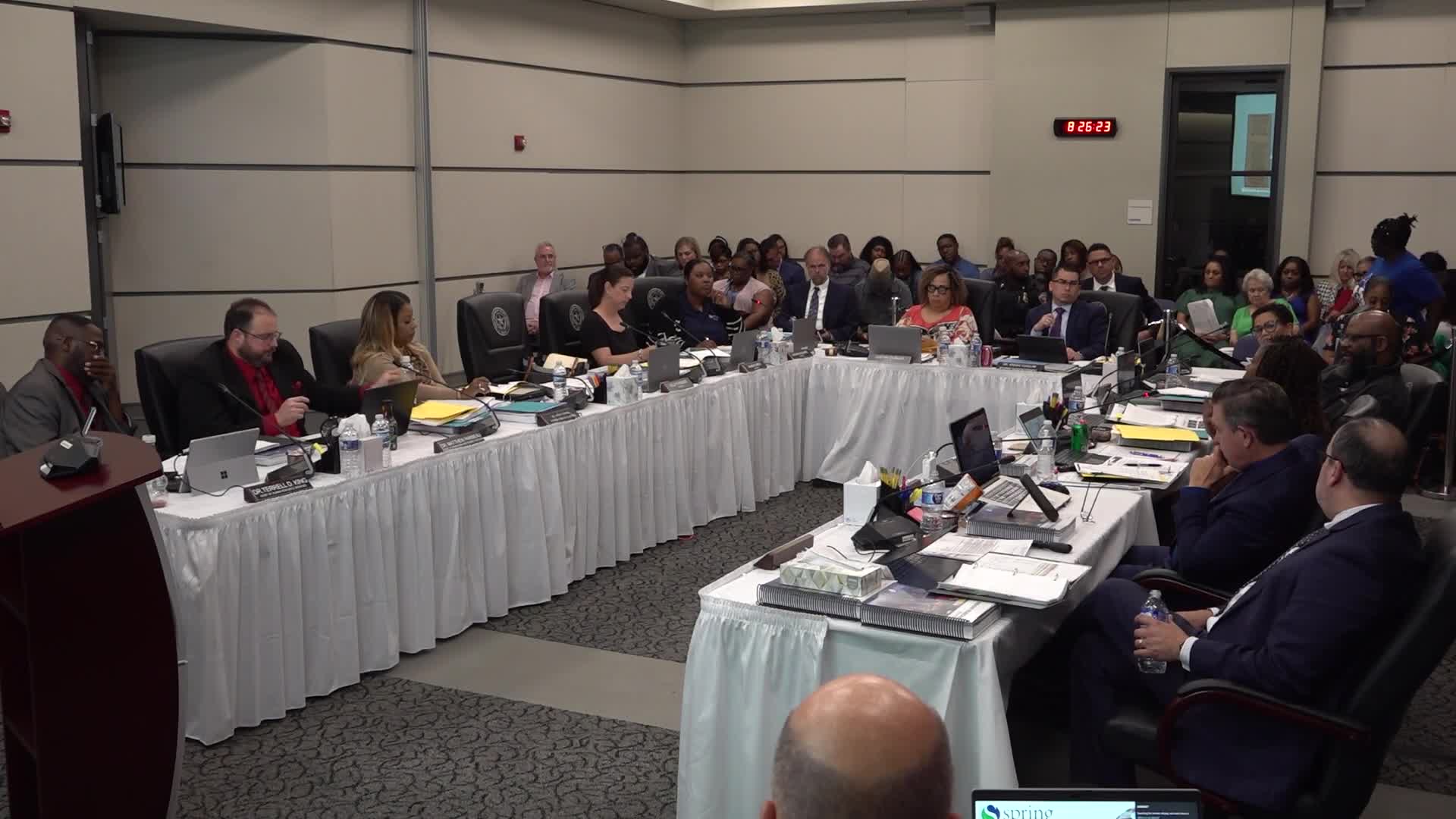District allocates $700K for school resources while stressing ROI and training needs
June 25, 2025 | SPRING ISD, School Districts, Texas
This article was created by AI summarizing key points discussed. AI makes mistakes, so for full details and context, please refer to the video of the full meeting. Please report any errors so we can fix them. Report an error »

In a recent Special Called Session held on June 24, 2025, Texas education officials discussed critical funding strategies aimed at enhancing student achievement across the state's schools. The meeting focused on the allocation of substantial financial resources to high schools, emphasizing the need for effective management and training to maximize the impact of these funds.
One of the key topics was the allocation of approximately $700,000 per comprehensive high school, which grants school leaders significant autonomy in deciding how to utilize these funds. While this flexibility allows for tailored approaches to meet specific school needs, concerns were raised about the effectiveness of current spending strategies. Officials highlighted the importance of implementing training programs to ensure that school leaders can make informed decisions about resource allocation, particularly in areas that directly affect student outcomes.
The discussion also touched on the necessity of evaluating the return on investment (ROI) for the expenditures made with these funds. Participants noted that while hiring additional staff, such as at-risk principals and hall monitors, is common, it is crucial to assess whether these investments are yielding the desired improvements in student performance. The conversation underscored the need for a structured approach to monitor and evaluate the effectiveness of financial decisions made at the school level.
Additionally, the meeting addressed the management of vacancies within the workforce. Officials explained that the budget is designed to account for a certain percentage of vacancies, which helps prevent significant financial deficits. However, it was noted that actual vacancy rates often exceed budgeted expectations, leading to discussions about how to best utilize the funds associated with these unfilled positions. The introduction of interim teachers was highlighted as a strategy to maintain classroom stability while addressing staffing shortages.
In conclusion, the discussions from the Special Called Session reflect a proactive approach to managing educational funding in Texas. By emphasizing the need for training, evaluation, and strategic resource allocation, officials aim to ensure that financial investments translate into meaningful improvements in student achievement. As these conversations continue, the focus will remain on refining strategies to maximize the impact of educational funding across the state.
One of the key topics was the allocation of approximately $700,000 per comprehensive high school, which grants school leaders significant autonomy in deciding how to utilize these funds. While this flexibility allows for tailored approaches to meet specific school needs, concerns were raised about the effectiveness of current spending strategies. Officials highlighted the importance of implementing training programs to ensure that school leaders can make informed decisions about resource allocation, particularly in areas that directly affect student outcomes.
The discussion also touched on the necessity of evaluating the return on investment (ROI) for the expenditures made with these funds. Participants noted that while hiring additional staff, such as at-risk principals and hall monitors, is common, it is crucial to assess whether these investments are yielding the desired improvements in student performance. The conversation underscored the need for a structured approach to monitor and evaluate the effectiveness of financial decisions made at the school level.
Additionally, the meeting addressed the management of vacancies within the workforce. Officials explained that the budget is designed to account for a certain percentage of vacancies, which helps prevent significant financial deficits. However, it was noted that actual vacancy rates often exceed budgeted expectations, leading to discussions about how to best utilize the funds associated with these unfilled positions. The introduction of interim teachers was highlighted as a strategy to maintain classroom stability while addressing staffing shortages.
In conclusion, the discussions from the Special Called Session reflect a proactive approach to managing educational funding in Texas. By emphasizing the need for training, evaluation, and strategic resource allocation, officials aim to ensure that financial investments translate into meaningful improvements in student achievement. As these conversations continue, the focus will remain on refining strategies to maximize the impact of educational funding across the state.
View full meeting
This article is based on a recent meeting—watch the full video and explore the complete transcript for deeper insights into the discussion.
View full meeting
